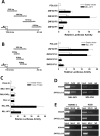ZNF521 sustains the differentiation block in MLL-rearranged acute myeloid leukemia
- PMID: 28412727
- PMCID: PMC5432245
- DOI: 10.18632/oncotarget.15387
ZNF521 sustains the differentiation block in MLL-rearranged acute myeloid leukemia
Abstract
Zinc finger protein 521 (ZNF521) is a multiple zinc finger transcription factor and a strong candidate as regulator of hematopoietic stem cell homeostasis. Recently, independent gene expression profile studies have evidenced a positive correlation between ZNF521 mRNA overexpression and MLL-rearranged acute myeloid leukemia (AML), leaving open the question on the role of ZNF521 in this subtype of leukemia. In this study, we sought to analyze the effect of ZNF521 depletion on MLL-rearranged AML cell lines and MLL-AF9 xenograft primary cells. Knockdown of ZNF521 with short-hairpin RNA (shRNA) led to decreased leukemia proliferation, reduced colony formation and caused cell cycle arrest in MLL-rearranged AML cell lines. Importantly, we showed that loss of ZNF521 substantially caused differentiation of both MLL-rearranged cell lines and primary cells. Moreover, gene profile analysis in ZNF521-silenced THP-1 cells revealed a loss of MLL-AF9-directed leukemic signature and an increase of the differentiation program. Finally, we determined that both MLL-AF9 and MLL-ENL fusion proteins directly interacted with ZNF521 promoter activating its transcription. In conclusion, our findings identify ZNF521 as a critical effector of MLL fusion proteins in blocking myeloid differentiation and highlight ZNF521 as a potential therapeutic target for this subtype of leukemia.
Keywords: ZNF521; acute myeloid leukemia; myeloid differentiation; transcription.
Conflict of interest statement
The authors declare no conflicts of interest.
Figures






Similar articles
-
ZNF521 Enhances MLL-AF9-Dependent Hematopoietic Stem Cell Transformation in Acute Myeloid Leukemias by Altering the Gene Expression Landscape.Int J Mol Sci. 2021 Oct 6;22(19):10814. doi: 10.3390/ijms221910814. Int J Mol Sci. 2021. PMID: 34639154 Free PMC article.
-
Exploring the contribution of Zfp521/ZNF521 on primary hematopoietic stem/progenitor cells and leukemia progression.Cell Tissue Res. 2024 Dec;398(3):161-173. doi: 10.1007/s00441-024-03926-2. Epub 2024 Oct 22. Cell Tissue Res. 2024. PMID: 39436449 Free PMC article. Review.
-
Identification of MLL-fusion/MYC⊣miR-26⊣TET1 signaling circuit in MLL-rearranged leukemia.Cancer Lett. 2016 Mar 28;372(2):157-65. doi: 10.1016/j.canlet.2015.12.032. Epub 2016 Jan 11. Cancer Lett. 2016. PMID: 26791235 Free PMC article.
-
Aberrant TRPM4 expression in MLL-rearranged acute myeloid leukemia and its blockade induces cell cycle arrest via AKT/GLI1/Cyclin D1 pathway.Cell Signal. 2020 Aug;72:109643. doi: 10.1016/j.cellsig.2020.109643. Epub 2020 Apr 19. Cell Signal. 2020. PMID: 32320859
-
Learning from mouse models of MLL fusion gene-driven acute leukemia.Biochim Biophys Acta Gene Regul Mech. 2020 Aug;1863(8):194550. doi: 10.1016/j.bbagrm.2020.194550. Epub 2020 Apr 19. Biochim Biophys Acta Gene Regul Mech. 2020. PMID: 32320749 Review.
Cited by
-
Zinc Finger Protein 521, Negatively Regulated by MicroRNA-204-5p, Promotes Proliferation, Motility and Invasion of Gastric Cancer Cells.Technol Cancer Res Treat. 2019 Jan 1;18:1533033819874783. doi: 10.1177/1533033819874783. Technol Cancer Res Treat. 2019. PMID: 31526099 Free PMC article.
-
Regulatory Role of microRNAs Targeting the Transcription Co-Factor ZNF521 in Normal Tissues and Cancers.Int J Mol Sci. 2021 Aug 6;22(16):8461. doi: 10.3390/ijms22168461. Int J Mol Sci. 2021. PMID: 34445164 Free PMC article. Review.
-
Inducible MLL-AF9 Expression Drives an AML Program during Human Pluripotent Stem Cell-Derived Hematopoietic Differentiation.Cells. 2023 Apr 20;12(8):1195. doi: 10.3390/cells12081195. Cells. 2023. PMID: 37190104 Free PMC article.
-
ZNF521 Enhances MLL-AF9-Dependent Hematopoietic Stem Cell Transformation in Acute Myeloid Leukemias by Altering the Gene Expression Landscape.Int J Mol Sci. 2021 Oct 6;22(19):10814. doi: 10.3390/ijms221910814. Int J Mol Sci. 2021. PMID: 34639154 Free PMC article.
-
Folate intake and colorectal cancer risk according to genetic subtypes defined by targeted tumor sequencing.Am J Clin Nutr. 2024 Sep;120(3):664-673. doi: 10.1016/j.ajcnut.2024.07.012. Epub 2024 Jul 16. Am J Clin Nutr. 2024. PMID: 39025327 Free PMC article.
References
-
- Estey E, Dohner H. Acute myeloid leukaemia. Lancet. 2006;368:1894–1907. - PubMed
-
- McMahon KA, Hiew SY, Hadjur S, Veiga-Fernandes H, Menzel U, Price AJ, Kioussis D, Williams O, Brady HJ. Mll has a critical role in fetal and adult hematopoietic stem cell self-renewal. Cell Stem Cell. 2007;1:338–345. - PubMed
-
- Krivtsov AV, Armstrong SA. MLL translocations, histone modifications and leukaemia stem-cell development. Nat Rev Cancer. 2007;7:823–833. - PubMed
MeSH terms
Substances
LinkOut - more resources
Full Text Sources
Other Literature Sources
Medical
Molecular Biology Databases

